Defining SaaS Branding
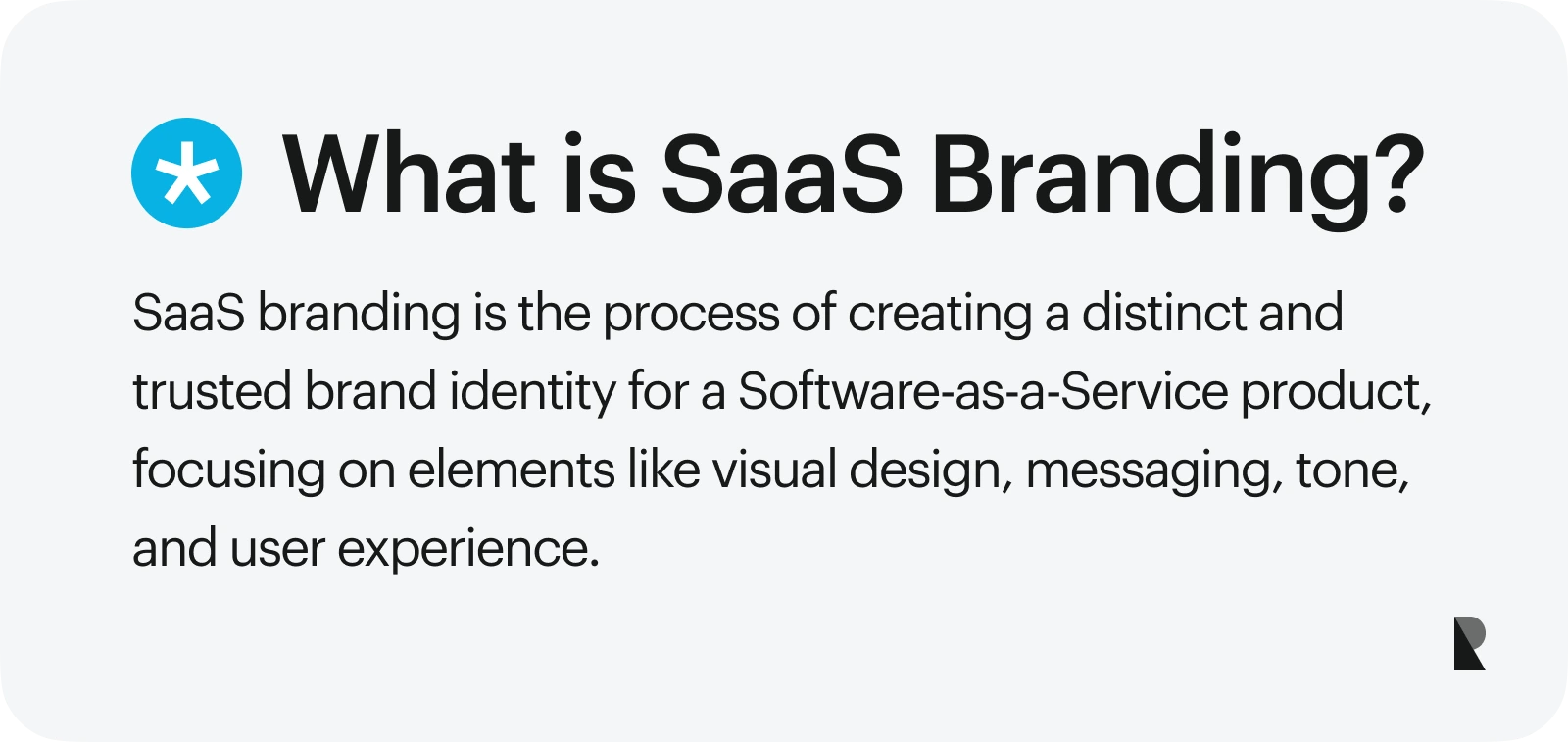
The global software as a service (SaaS) industry is booming, valued at $390 billion. Yet, competition is fierce with over 9,000 SaaS companies in the US alone. SaaS brands increasingly sound and look the same—similar color scheme, messaging, stock photos, and vectors across all platforms. This "plague of sameness" renders them invisible rather than unique and relatable.
So, how do you make your SaaS brand stand out? Through effective SaaS branding. This guide will teach you what goes into powerful SaaS branding, the latest trends, and expert tips for creating a lasting brand.
It's a complex and ongoing process of learning about your target audience and the competition, humanizing your brand into an entity people can relate to, creating a look that makes you stand out, and shaping people's perspectives to align with your brand image.
Importance of SaaS branding in a fast-paced market
SaaS is unique. You market to two audiences: end-users and buyers. Effective SaaS branding allows you to create and communicate cohesive brand messages and identity that appeal to both.
Beyond crafting a unique identity, SaaS brings the following benefits: * Stronger brand recognition and recall * Cost-effective marketing through loyal customer referrals * Positive brand perception leading to increased satisfaction
Branding vs. Marketing in SaaS: What’s the Difference?
| Key differentiators | SaaS branding | SaaS marketing |
|---|---|---|
| Goals | To create a unique and relatable brand identity. | To promote products and increase sales. |
| Focus | Long-term customer connections | Generating leads and converting them into sales. |
| Measuring success | Brand awareness and loyalty | Sales and user growth |
SaaS branding and marketing go hand-in-hand in establishing a company. However, they are two distinct functions that accomplish different goals.
SaaS branding aims to create a unique, relatable brand identity. SaaS marketing focuses on promoting products and increasing sales. Branding operates to build long-term customer connections, while marketing generates leads and converts them into sales.
That said, measuring success also varies.
SaaS branding success is gauged by brand awareness, sentiment, and loyalty. Marketing is measured by sales performance and user growth.
Though related, these two disciplines have different timelines. Strong branding depends on cultivating reputation and trust, which takes longer. Marketing can drive quicker results, depending on the strategies used.
Discover your full potential and craft a strong brand strategy when you work with a SaaS branding agency.
Core Elements of an Effective SaaS Branding
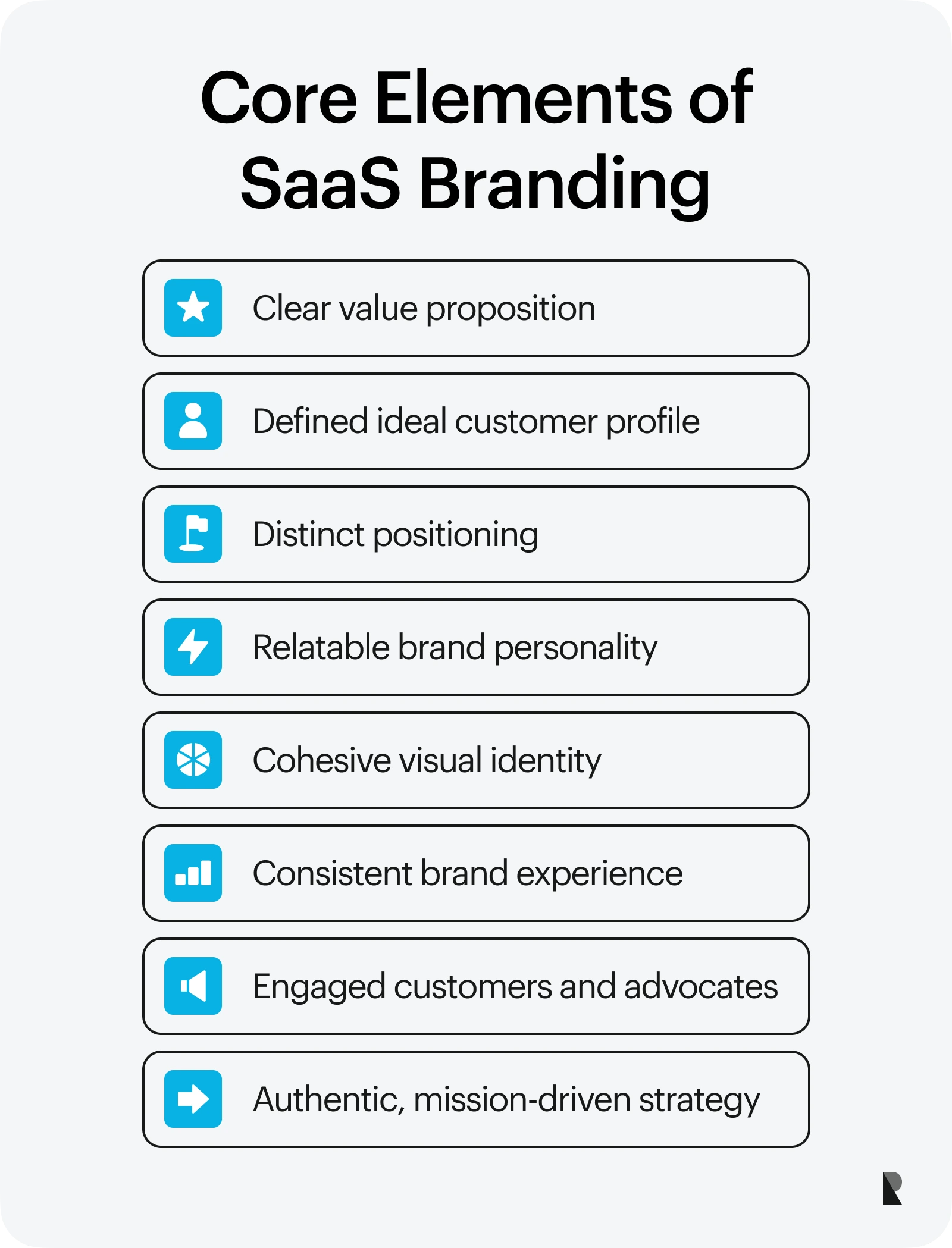
1. A well-defined value proposition
Determining your value proposition is one way to differentiate yourself from other SaaS companies. This refers to the features or benefits only your company can provide to its potential customers. For example, Hubstaff enables its users to manage their teams better through various productivity tools. Or how PandaDoc "takes the work out of workflow." The value proposition solves specific problems you can emphasize and communicate in your branding.
So, how do you determine your value proposition? By understanding your customers' needs, desires, expectations, and behaviors.
2. Deep understanding of your ideal customer profile
Knowing who you are catering to is half the battle won when establishing a strong SaaS brand. This knowledge enables SaaS companies to create products and services that appeal directly to specific customers, making it easier to sell and grow. It also ensures you focus your resources on the right customers.
This entails creating a customer profile or describing a person or business that would benefit from what your SaaS company offers. For example, a SaaS company that provides web development tools may target professionals between 20 and 35 working in e-commerce businesses.
Next, you must conduct thorough research about these customers and pinpoint needs that you can address. Look into who's buying from your competitors and why. Understanding what makes your customers tick can shape a SaaS brand that resonates and connects with your audience.
3. Strong positioning that cuts through the noise
Now that you know what you can offer and who your customers are, it's time to determine how to position your SaaS brand in the market. This means clarifying why someone should choose your software over competitors, which is vital if you want to stand out in a crowded market.
With its seamless ecosystem, Microsoft Teams is a one-stop shop for team communication. Mailchimp is the go-to for small businesses looking for end-to-end email marketing tools. Zoom emphasizes reliability and ease of video conferencing.
Aside from increasing visibility, a strong differentiation or positioning enables SaaS companies to be understood, connect with the right audience, and help customers make informed choices.
4. Unique brand personality that resonates with your audience
Brand personality helps humanize your brand so you can be relatable, approachable, and trustworthy. It's essential in evoking emotional connection, which serves as the foundation for creating memorable experiences and fostering loyalty.
Think about it. Most SaaS companies can be intimidating, especially for tech beginners. A friendly and approachable brand personality is more likely to entice customers to engage with and learn about its products, leading to better business outcomes.
That said, authenticity is key to honing a brand personality.
A brand personality is defined by fun, serious, or helpful traits, among other things. It also embodies a tone of voice, which is how your brand will communicate to its audience. Finally, it must have an appealing visual identity that aligns with your brand.
5. A visual identity that aligns with your brand
The visual identity of a SaaS brand has a massive impact on how people perceive it. And it only takes a few seconds for them to form one. So, make it count!
Aside from crafting appealing designs, your choice of colors, logos, images, illustrations, and other visual elements should reflect your brand identity. A modern and professional brand with a slightly serious tone might opt for muted tones and sleek designs. Use photos and graphics that represent your audience.
Let your brand personality shine through in your visuals and create a strong impression!
6. Consistency across branding touchpoints
Consistency in SaaS branding avoids potential confusion and miscommunication. Exposing your audience to the same brand logo, color palette, and messages strengthens brand recall.
Consistency encourages loyalty, too. When you deliver the same quality of products and services and are consistent with the brand experience you provide, customers know what to expect from you and are more likely to return.
So, how do you ensure consistency across branding touchpoints?
You can create a brand style guide or guidelines that outline rules and dos and don'ts when using visual elements. This makes sure everyone in your organization understands and applies your branding correctly. It's also essential to align visuals across all brand touchpoints, like websites, social media, and offline marketing materials.
7. Loyal customers and brand advocates
It's great to have a community of like-minded consumers loyal to your brand. But did you know you can leverage them even more by turning them into brand advocates?
Brand advocates are organic ambassadors or willing representatives who promote your brand to others through word-of-mouth, sharing your social media posts, or providing testimonials. Compared to brand ambassadors, brand advocates are seen as more authentic because they promote your brand without getting paid.
You can grow an army of brand advocates that helps customers feel connected. For instance, you can open dialogues or groups where they can share feedback about their experiences and tips. Let them mingle online and offline through events like webinars, AMAs (Ask Me Anything), and other fun gatherings.
You can also make them feel involved by sharing their stories through videos and blog posts. This encourages them to promote your SaaS products further.
Finally, win them by providing consistent and excellent support. Knowing you are trustworthy makes them more likely to recommend you to others.
8. Authentic and mission-driven brand strategies
When a brand is clear about its mission and embodies its core values, like-minded people are organically drawn to it. This paves the way for trust and loyalty, which is essential, especially for companies like SaaS brands that offer online services.
For example, Canva is a popular design platform used by individuals and businesses. The brand commits to creating an accessible tool regardless of users' skill levels. In alignment, Canva's successful brand strategy includes tutorials and user-generated content that educates people on how to best leverage the platform. It empowers individuals by providing them with a space to create visually appealing and inspiring designs.
A Look Into Inspiring SaaS Branding Examples
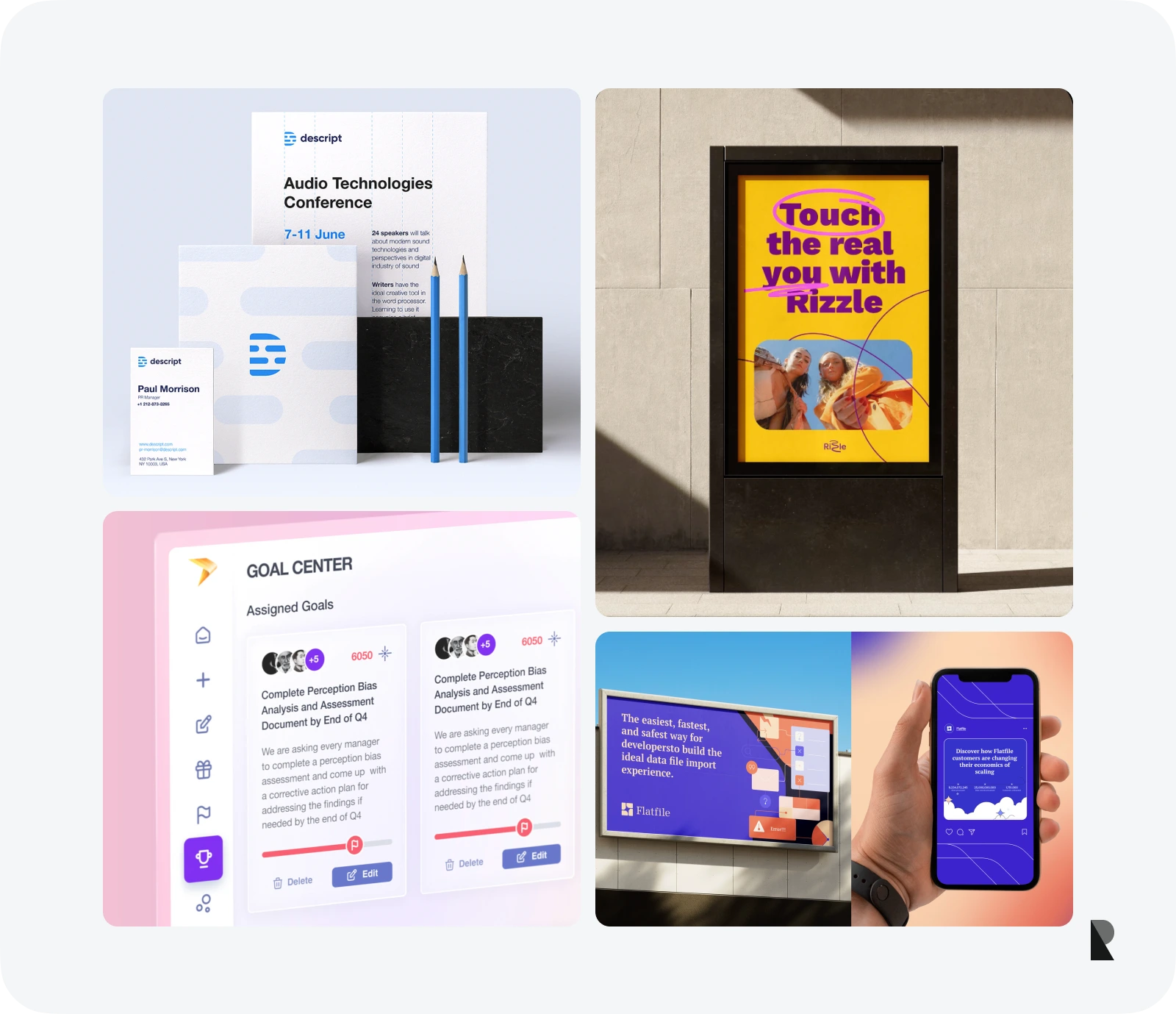

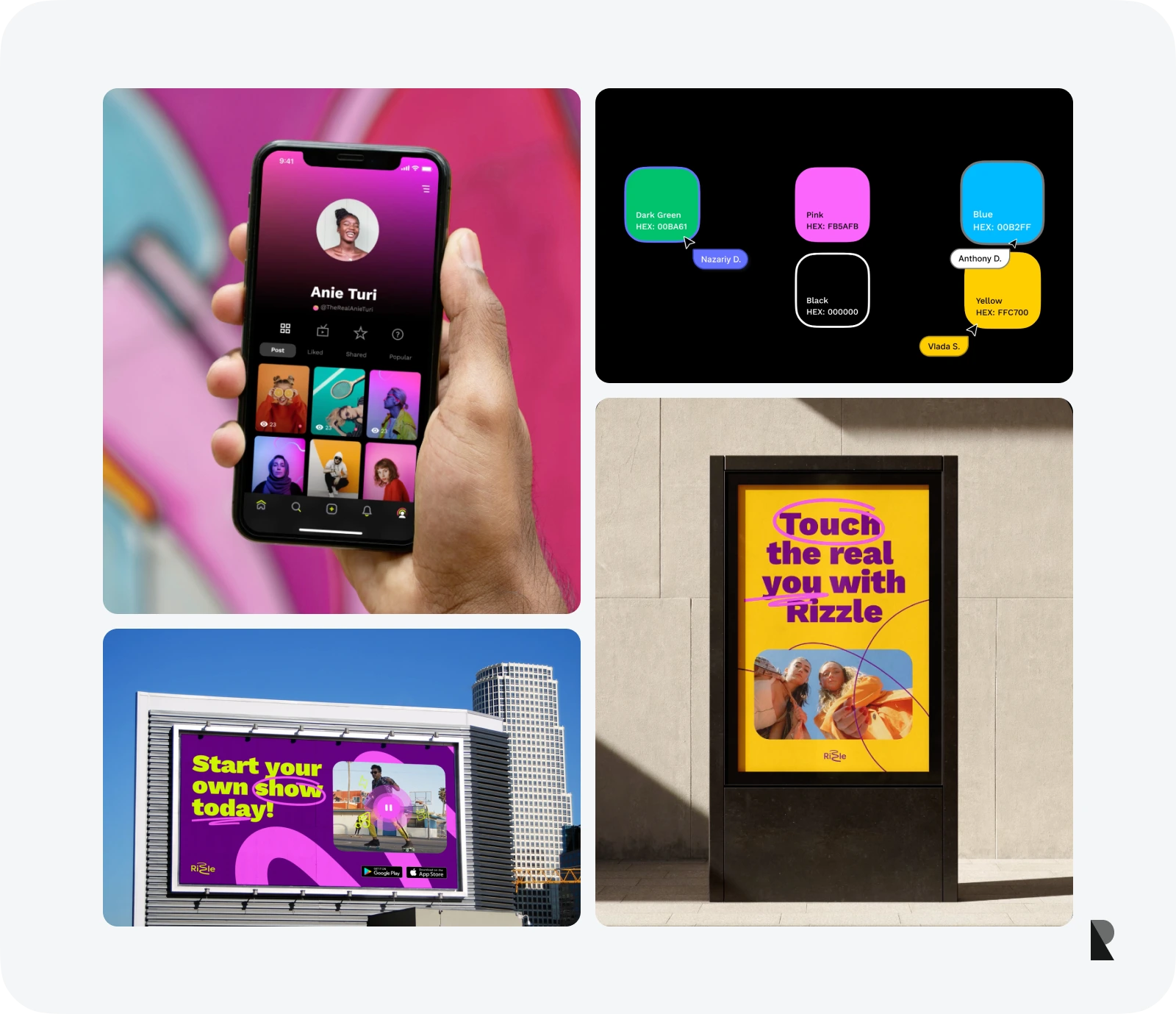
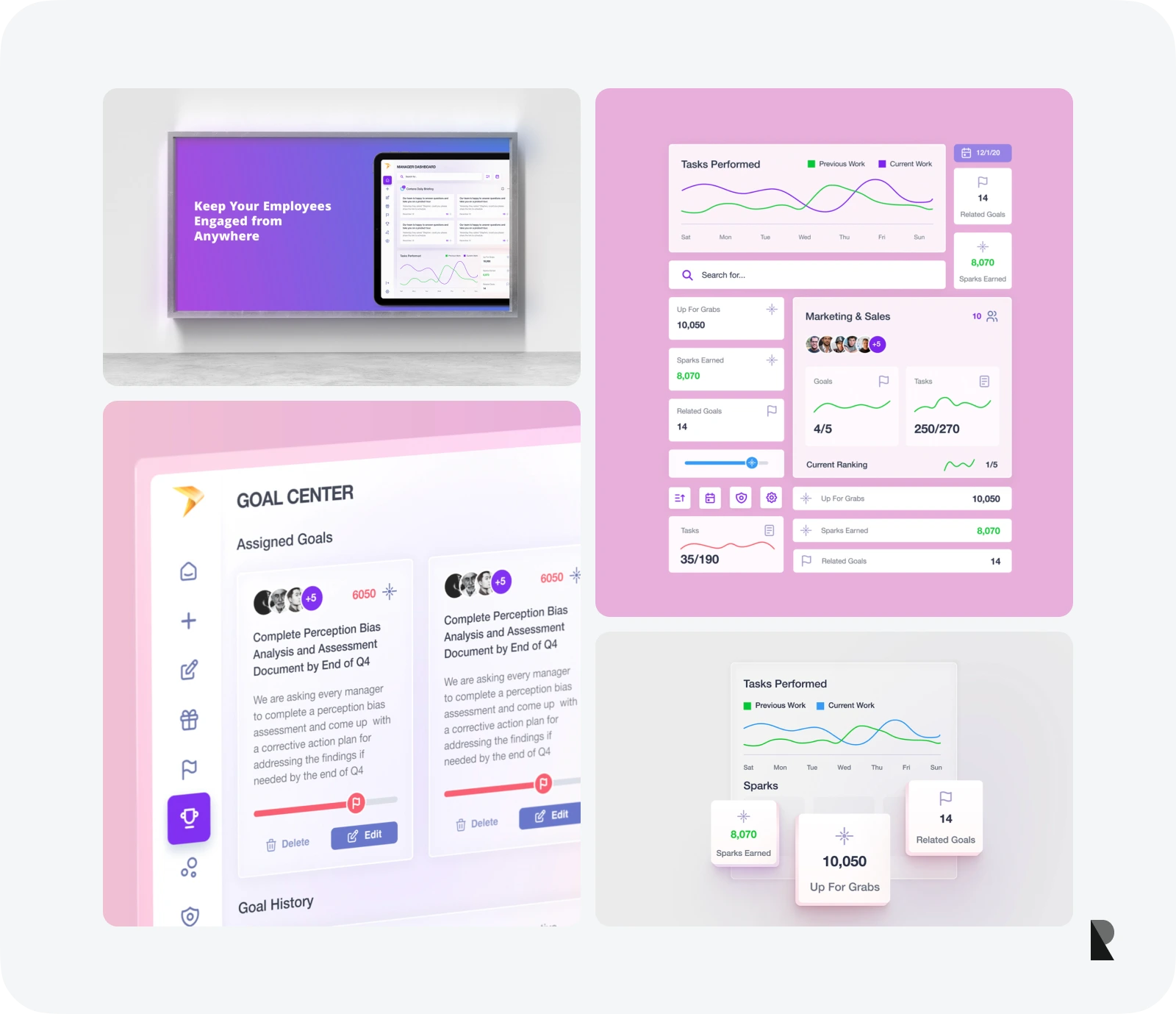
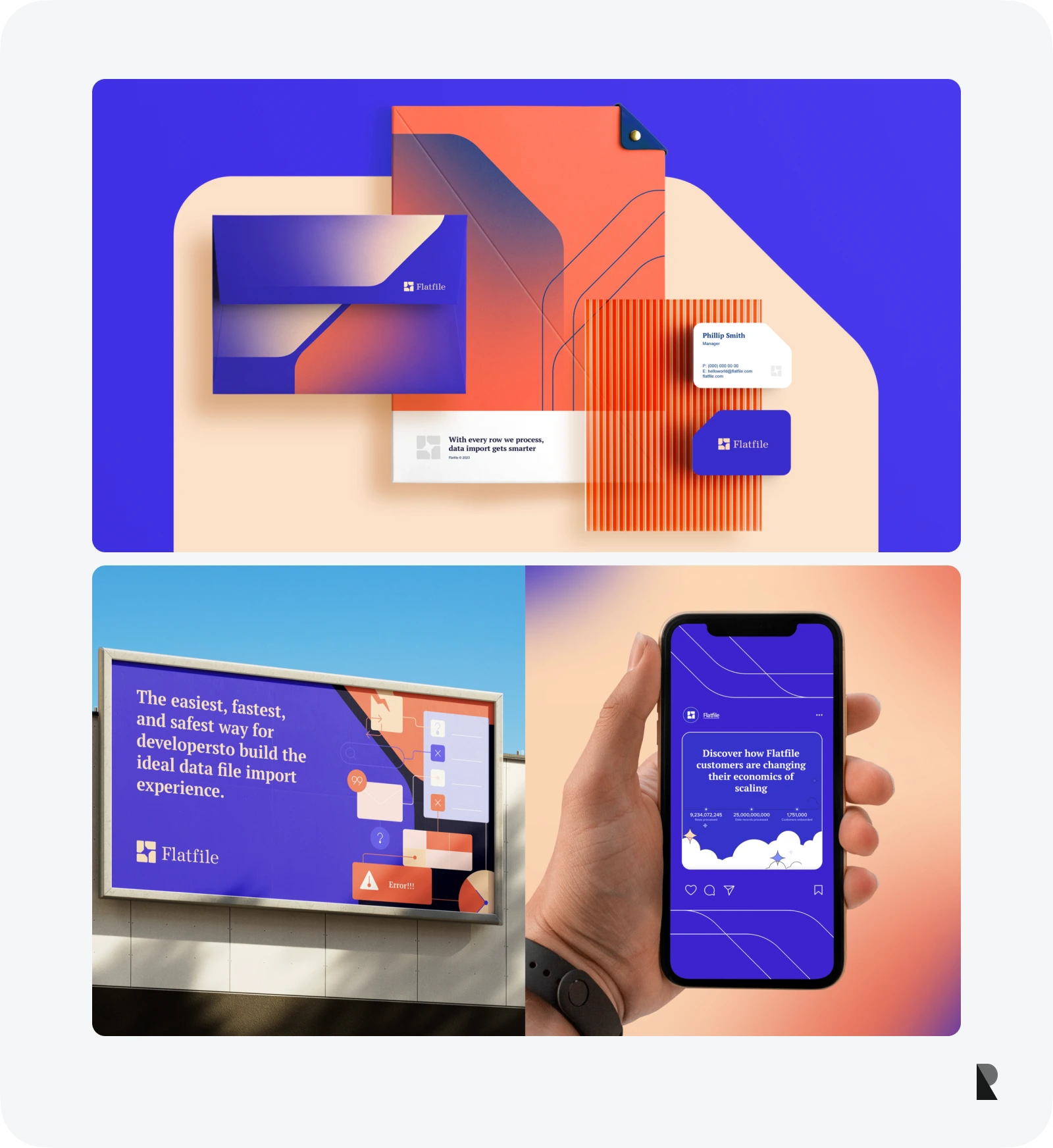
Linktree
Linktree helps businesses and individuals create a central link for everything. This is a much-needed solution, as most social media platforms only allow one or two links in bios.
Linktree successfully encapsulates this through its messaging: "One link to help you create, curate, and sell." It's clear, short, and simple!
The brand also incorporated a tree in its logo design, creating a simple yet memorable association with its name. The colors are fresh and easy on the eyes, matched with a friendly tone, typography, and user interface that is not confusing for beginners.
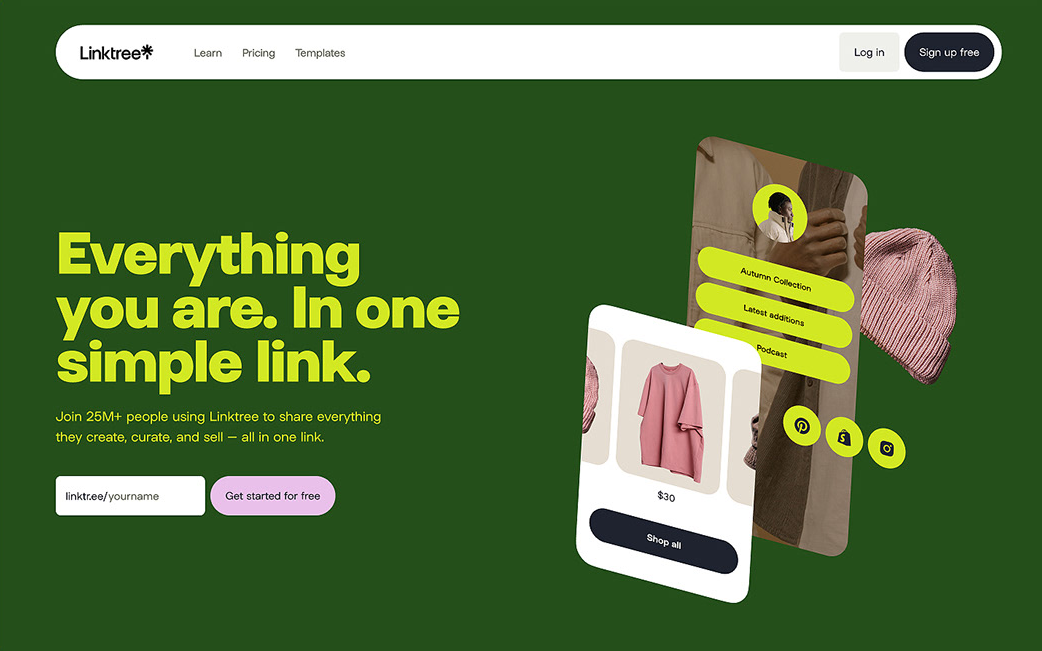
Website design for Linktree. Image via Behance
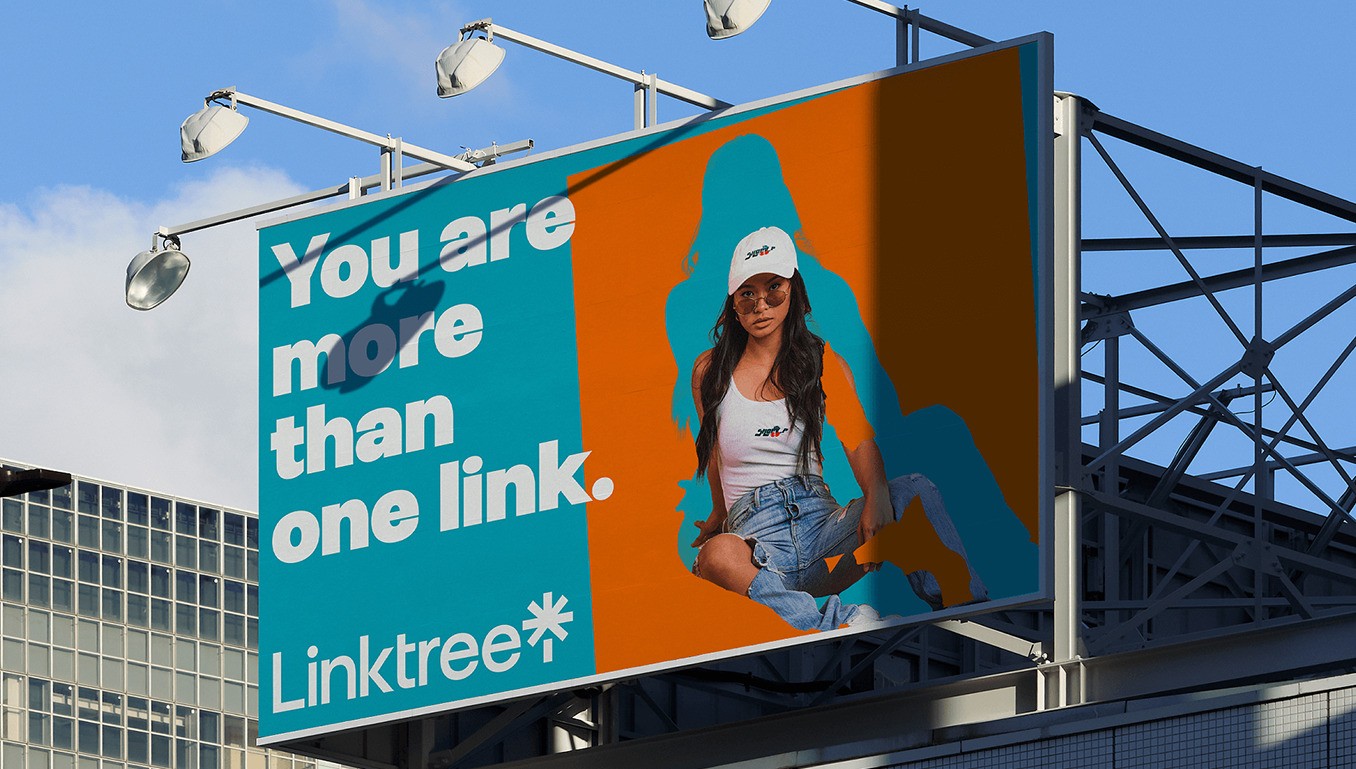
A billboard ad for SaaS brand, Linktree, with a catchy copy. Image via Behance

Linktree partners with influencer Jenna Evangelia via Instagram
Linktree promotes its free version with enough features to get started. However, pro and premium subscriptions, like custom branding and analytics, are available for those who need more. This seamless upselling makes it easy for users to understand and explore what the SaaS brand is capable of.
Finally, Linktree partners with major platforms and their influencers, like TikTok and Instagram. Countless videos have been shared on how to use Linktree to connect and grow their online community.
Notion
Notion is an all-in-one workspace streamlining tasks like note-taking, task management, database creation, and project planning. Instead of using individual tools for every function, you can do everything on Notion! And this is important as it can be hefty for startups and small-time businesses to invest in multiple productivity tools.
Notion's approach to branding is centered around a clean and modern aesthetic balanced by a fun tone and language. For instance, if Notion crashes, it displays a message that says, "Notion is having a siesta. We'll be back soon!" The visual identity elicits a professional vibe that gets the job done and knows how to have fun.
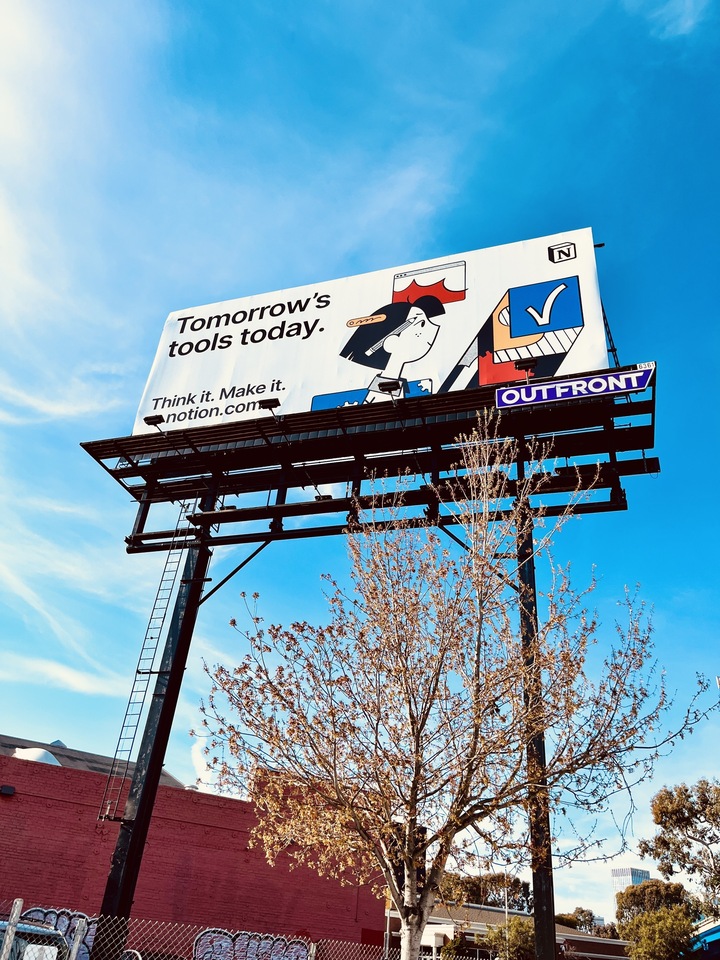
Illustrative billboard design for Notion’s Think It campaign. Image via Notion
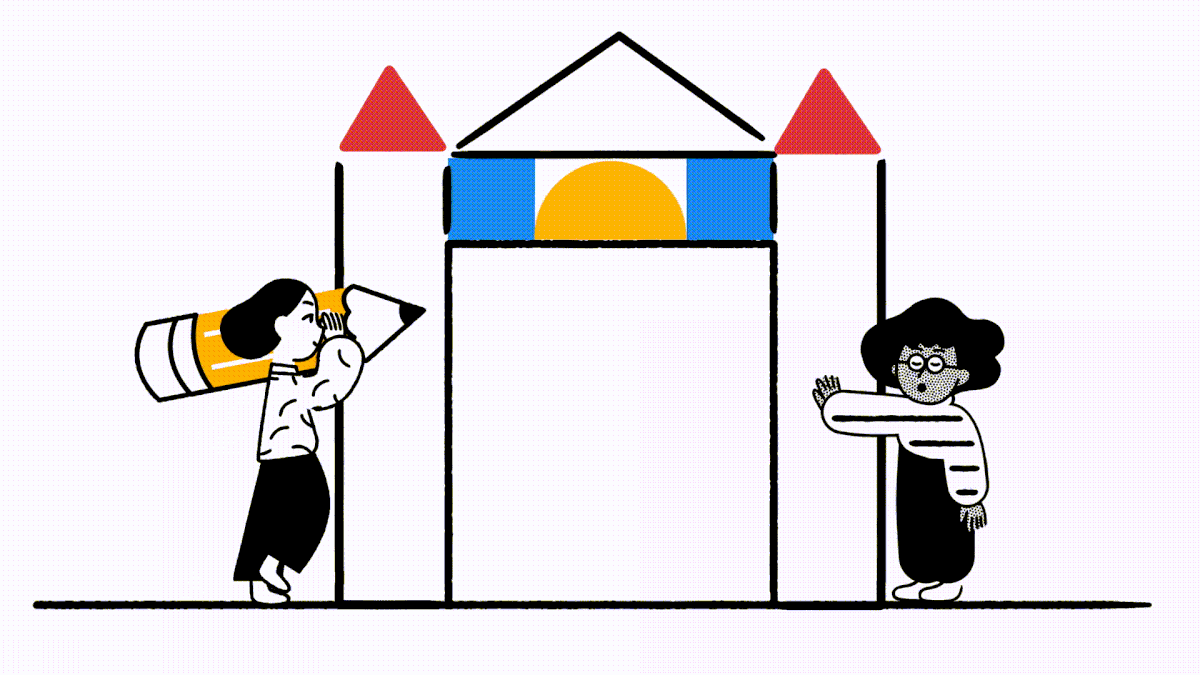
Playful animation, encapsulating Notion’s brand personality. GIF via ItsNiceThat
The brand has robust features, but it lets users discover them as they go along instead of highlighting them at every opportunity. This approach is reflected in how the brand grew its product line. It started as a note-taking app, which then expanded to other services.
The brand also leveraged its customizable interface, highlighting users' Notion setups on social media. With branding that makes people feel involved, the community of loyal members has grown.
Slack
Emails are slow and hard to organize when communicating with multiple teams and people. Group texts on messaging apps, especially for businesses, can be chaotic.
With these problems in mind, Slack launched a messaging app for businesses and other organizations. It enables users to send messages, share files, and organize conversations into channels. It also allows integration tools like Google Drive, Notion, and Zoom.
This may sound boring on paper, so Slack approached branding differently. While it is a professional tool, Slack's branding focuses on making work not feel like work. This can be seen in humorous copywriting, like "Slack is loading…seriously, it's coming."
Slack invested in content marketing, primarily educating potential users through blogs, social media posts, and podcasts. It also has a Customer Stories section for first-hand experiences of companies and how Slack helped them become more productive. And the brand's freemium model has driven user growth.
Regarding visual design, Slack deviated from the usual blue color used in tech. The logo integrates vibrant colors, including green, yellow, and red, making it distinct and easy to remember. It also features a hashtag symbol, which appeals to its young market.
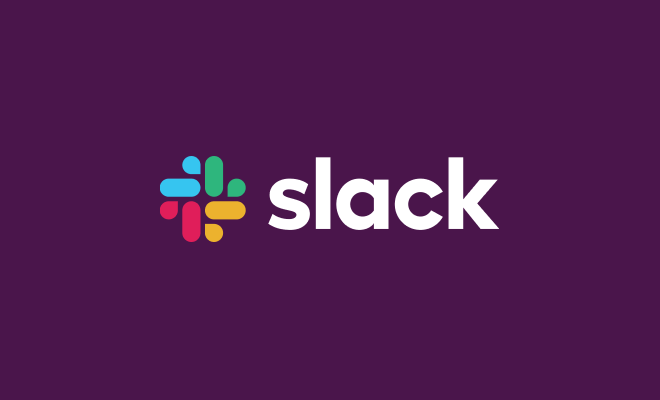
Slack’s brand identity owned the color purple. Image via Slack
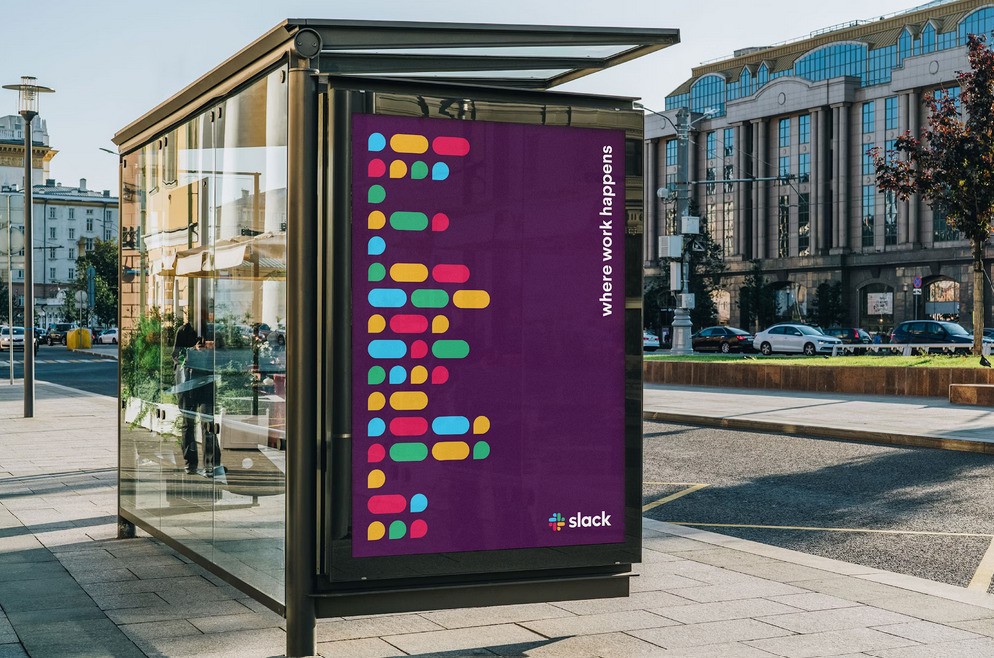
Flexibe and vibrant visual design for Slack. Image via Pentagram
Airtable
Another SaaS company to learn from is Airtable. It is a cloud-based, user-friendly project management tool that helps people create and manage databases, making tracking projects, clients, and tasks easier. It features collaboration tools that allow users to share ideas and work together in real time, wherever possible. The brand has pre-made templates for different purposes.
Aligning with its spreadsheets-driven platform, Airtable incorporates branding elements like grids, charts, and colorful icons into its visual identity. It also uses cheerful colors to create a more inviting platform, making the software feel approachable for all levels of users.
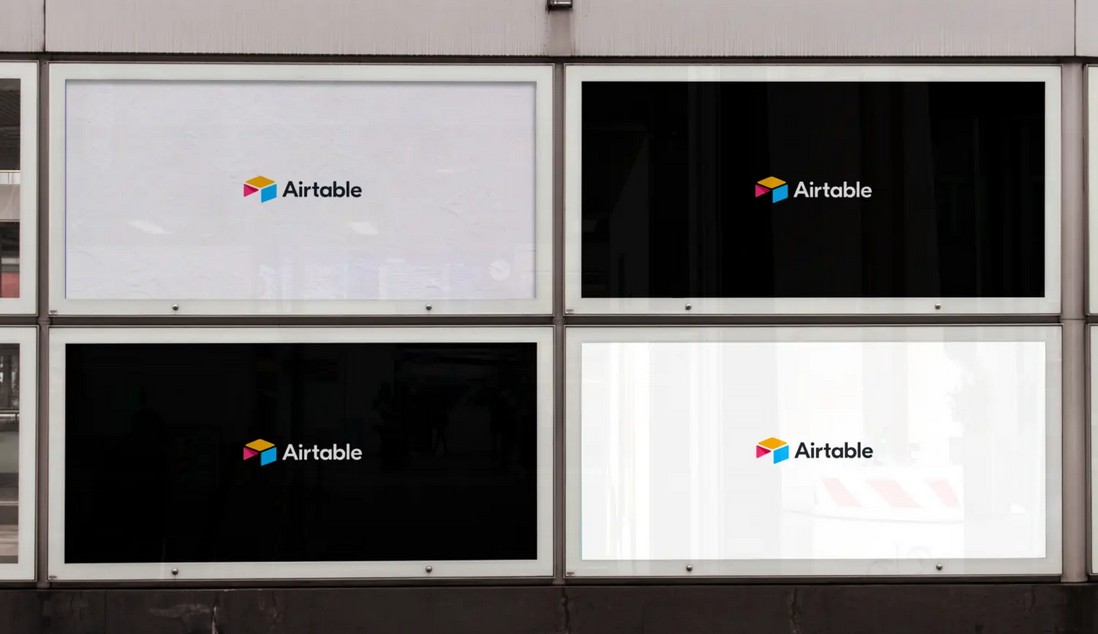
Colorful table icon in orange, red, and blue against black and white backgrounds] Caption: Airtable logo redesign via WNW
What made Airtable a successful brand is its customer-centric approach. Before its launch in 2015, it gathered 100 ideal customers to develop and test its products. Over time, it gathered data on the challenges its audience wants solved and their needs, behavior, and interests.
This shaped how Airtable presented its brand to the world with ads tailored accordingly. Online traffic from searches soared, new users were intrigued by the ready-to-use templates, engaging website design, and Airtable's referral program generated more buzz! It has also grown a community of over 50,000 customers. Today, Airtable is estimated to be worth $12 billion, with over 500,000 organizations using the platform worldwide.
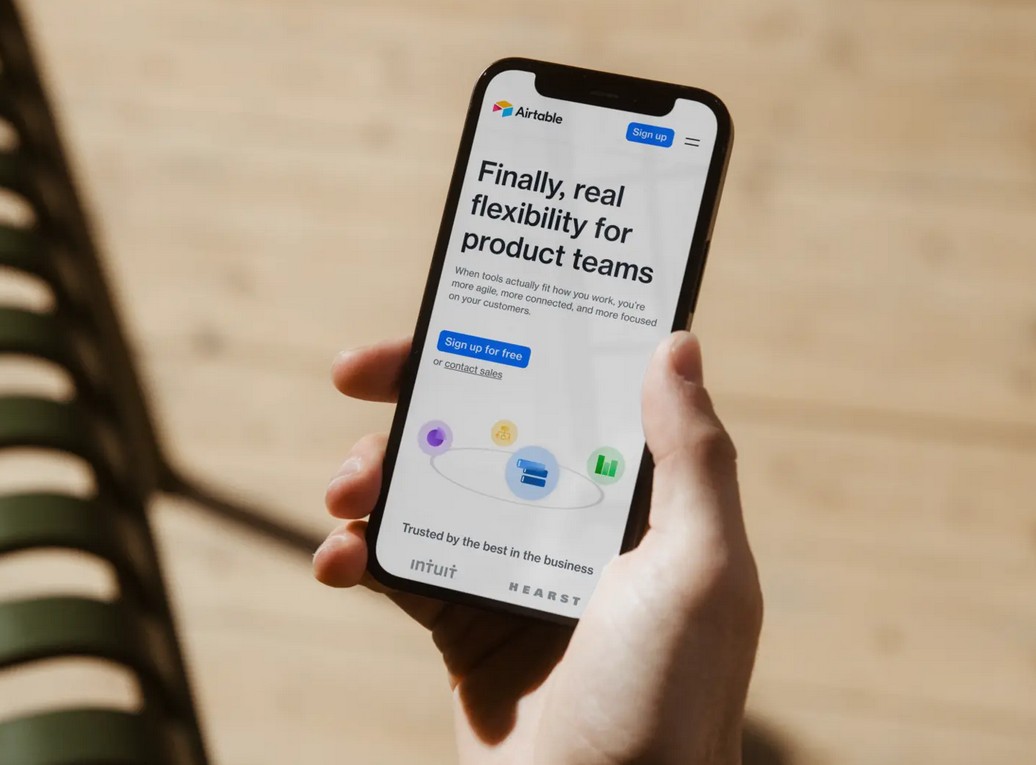
Airtable uses simple and friendly language to convey its value proposition. Image via WNW
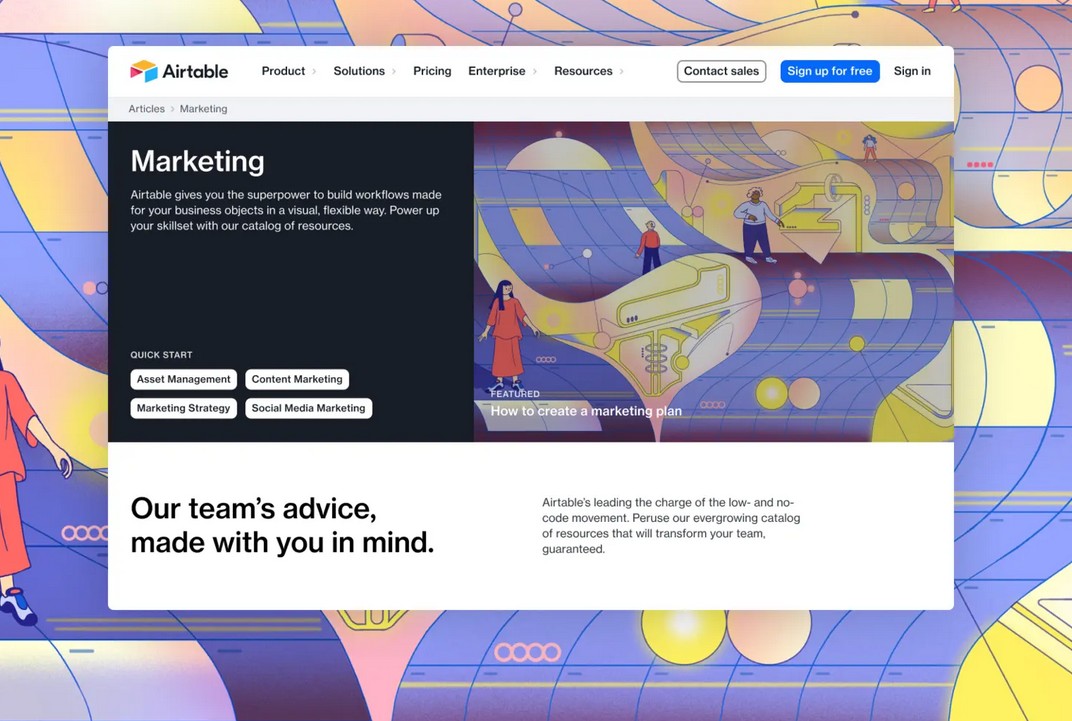
Airtable provides resources like how-to blogs for its users. Image via WNW
Is SaaS Branding Worth It?
The short answer: Yes.
Whether you're an emerging or established company, strategic SaaS branding can take your company to the next level. It communicates your product's unique benefits, helping potential customers understand its value. It also attracts the right people and creates a sense of community among users.
Additionally, building a strong SaaS branding makes your marketing efforts more effective. When you gain people's trust, they are less likely to second-guess their purchase decisions. This can increase sales, allowing you to grow your business further and add more products. Finally, SaaS branding builds lasting customer relationships, paving the way for growth and success.
May 12, 2025
